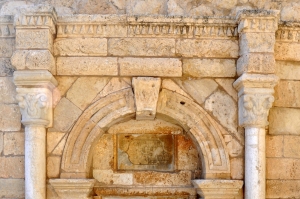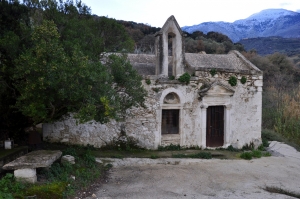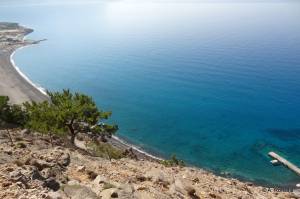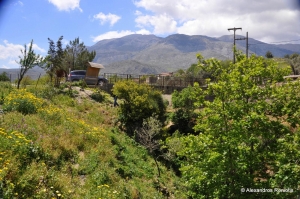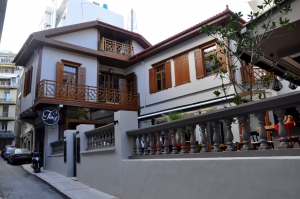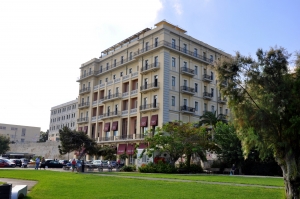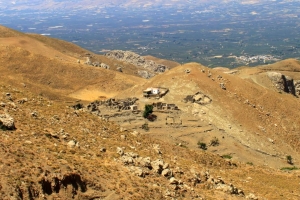The Venetian armoury (Armeria or Armarento) is situated between the Loggia and St. Titus Square. Although it served a different purpose than the noble's club, the two buildings formed a single complex.
The fountain is located at Michelidakis street, behind the Historical Museum of Crete. The fountain was not originally here, but adorned the exterior of the house of the doctor Idomeneas Markatatis. We can see two columns with capitals that bear performances with plants and an Ottoman inscription.
By Sarchos we meet one of the most impressive churches of Cretan innerland with a beautiful relief entrance and rear window, which is dedicated to the Birth of the Virgin Mary. The church dates back to the 14th century and is double-aisled, bearing very important frescoes.
Thousands of visitors, descending the Samaria gorge, reach Agia Roumeli every day and enjoy their bath in the main beach, Gialos, stretching in front of the taverns. However, there are some very nice and quiet beaches around, one could explore. One of these beaches is Mashali and is actually the west part of the bay of Agia Roumeli.
This part of the E4 trail is quite easy and offers some nice views to the fertile valleys and vineyards of Heraklion prefecture. The route starts from Ano Asites and firstly meets the cavernous church of Saint Anthony and finishes at Prifitis Ilias. Note that there are long parts along roads, thus you could split the route into smaller parts and overcome some with a car or bike.
The Small Serai is located at 21 Evropis Street and was used as the residence of Little Bey, a wealthy Muslim Cretan. Today it is a privately property and operates as a restaurant.
Revolutionary in its time, this was the first multi-storey building to appear in Heraklion and the first apartment block to be equipped with a lift. It was built between the years 1926-1930.
Between the village Sternes and the Monastery Koudoumas, on the wild and arid range of Asterousia, we meet the abandoned village and the church of St. Nicholas (celebrating on December 6th). The church was a dependency of the monastery Koudoumas.













